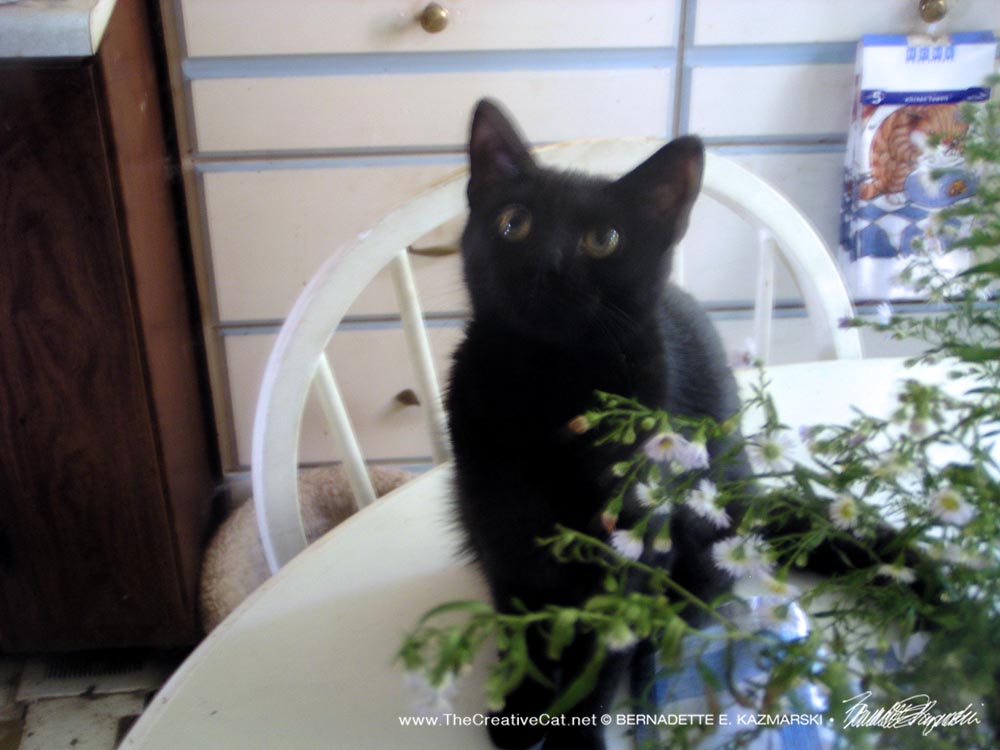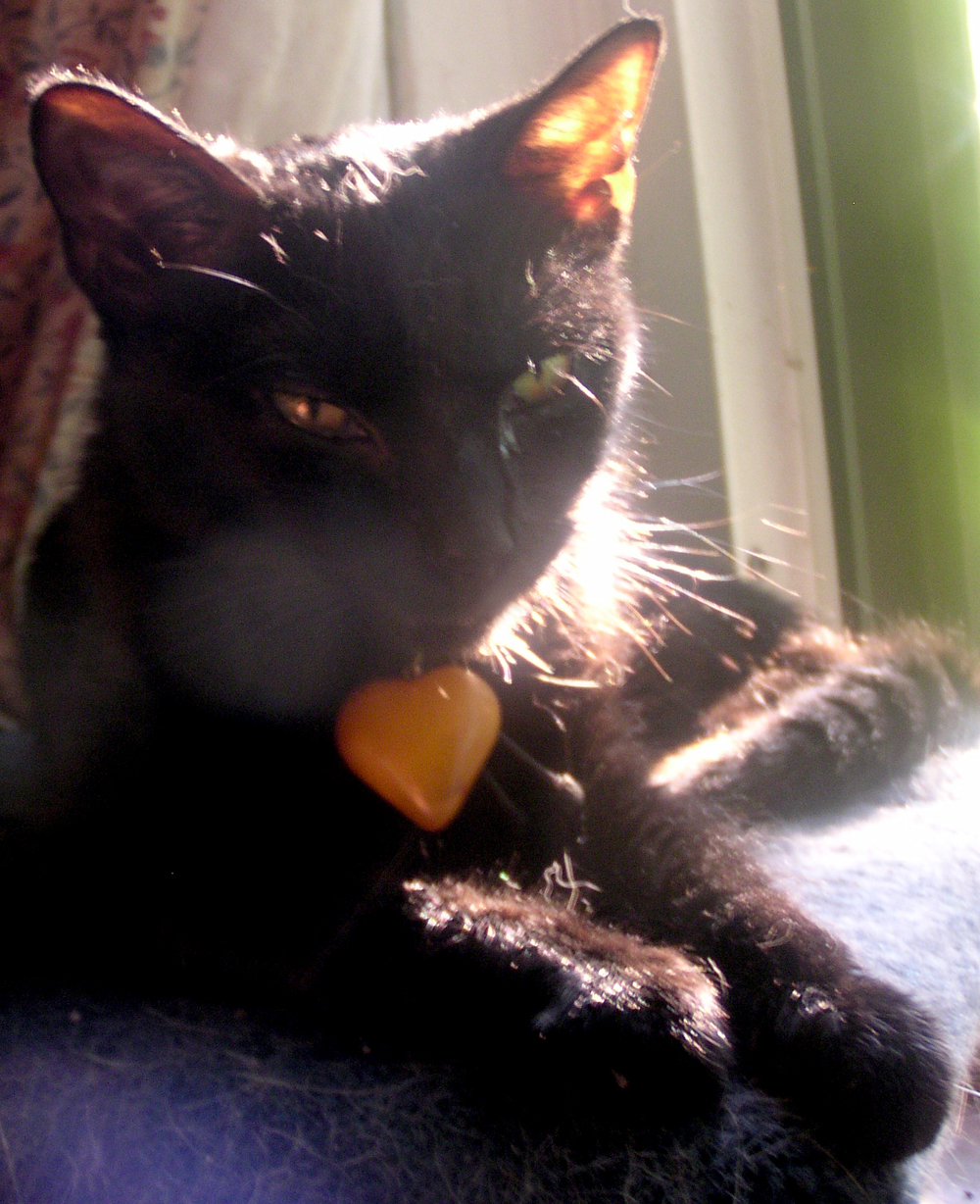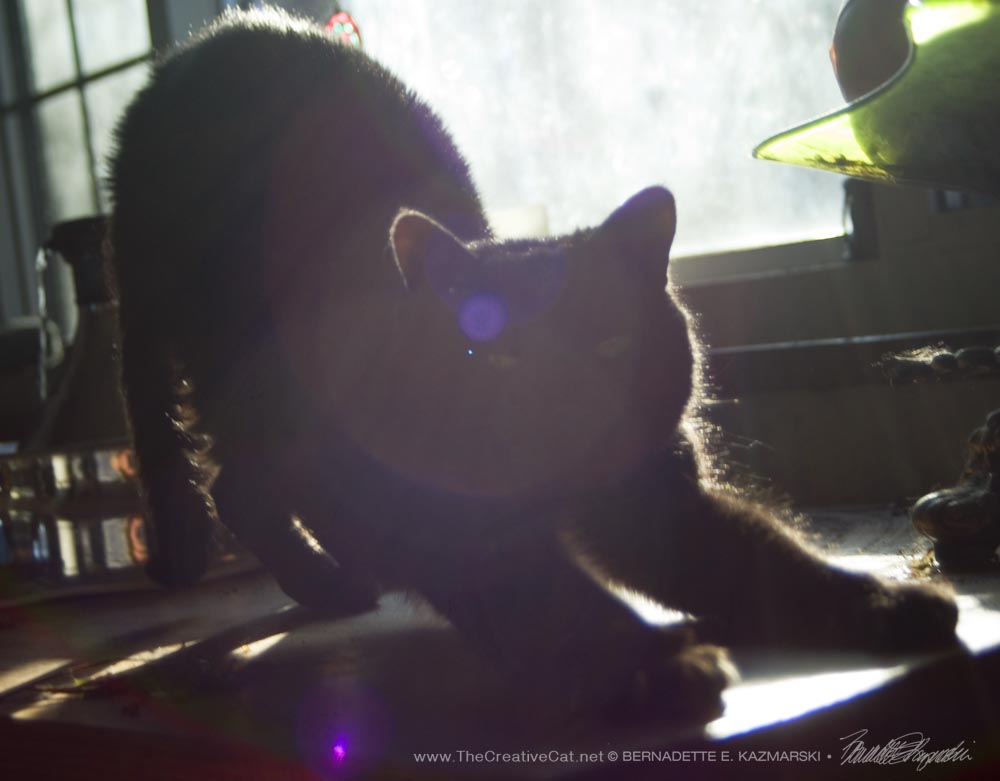Diagnostic Testing Improvement for Non-Effusive FIP

Feline Infectious Peritonitis or FIP is notoriously difficult to diagnose.
There are two forms of FIP, referred to as granulomatous, or dry, FIP and effusive, or wet, FIP. Both have symptoms like spiking fevers, lethargy and others that are common symptoms of just about every conditions cats can develop, and they present inconsistently. Dry FIP has no obvious symptoms specific to the condition, but wet FIP causes a specific fluid to build up in the abdominal or pleural cavity and the change in the cat’s body can be observed, the fluid drained and tested. The dry form may develop fluids in the body, but more importantly lesions develop on the internal organs and variously affect the organ’s function and lead to secondary infection.
In both cases the immune system is greatly compromised, secondary infections are common, and neurological symptoms such as changes in eye function or vision loss, or difficulty balancing or walking which develops to functional paralysis. Still, cats with non-effusive FIP often have only vague symptoms and can, like cats with FIV, live a long and relatively healthy life if given and excellent diet and health care while the disease remains latent. Sometimes diagnosis is only made post-mortem when a necropsy will find the typical lesions on organs.
The fluids of the effusive form are a specific color, nature and content—sticky, straw-colored—but will usually return if drained. The fluid itself puts a strain on the body’s function and on the immune system. Other than that the symptoms in both conditions are vague, inconsistent and are concurrent with many other conditions. A diagnosis is often made by treating symptoms and watching progress and thereby eliminating any other possibilities.
Though it has been known to exist for decades FIP has not been studied as have other diseases; feline illnesses aren’t studied at the rate other species’ illnesses are studied, and funding is often limited. Rresearchers from the School of Veterinary Medicine, University of Glasgow, UK and their collaborators sought a protocol to assess cats with and without confirmed non-effusive FIP comparing detection of viral RNA. Disease status of the cats was determined using a combination of pathologies and was highly accurate. Read more about the study on the Winn Feline Foundation website.
What is Feline Infectious Peritonitis, or FIP?
First recognized in the late 1950s with a steady increase in the incidence of the disease from the 1960s to today, FIP kills up to 1 in 100 cats under age 5, and cats coming from more crowded or stressful situations such as shelters or catteries are at five to 10 times greater risk of contracting and developing the disease. It is virtually 100% fatal, meaning no cats have been known to survive for more than a few months beyond diagnosis without symptoms, which can vary widely and mimic other illnesses. Any symptoms can be treated but the treatment is palliative, not curative, and there is currently no known cure for the disease.
FIP begins as feline enteric coronavirus, or FECV, a fairly common intestinal virus among cats, and is spread by fecal matter. About 90 percent of cats who come in contact with FECV have only minor symptoms such as mild diarrhea for a few days or no symptoms at all, then recover with no apparent lingering effects.
But in about 10% of infected cats the virus moves from cells in the intestines to a particular white blood cell called a macrophage which exist all over the body. These specialized cells are part of the body’s immune system and have the job of cleaning up dead cells and cellular debris from injuries as well as engulfing disease-causing pathogens and digesting them, sucking it all up like tiny internal vacuum cleaners. However, some pathogens fool the system and avoid being digested and end up living safely inside the macrophage, cleverly hidden from the immune system. This allows the virus to replicate without the body realizing the virus is a pathogen and causing intense inflammation wherever it has decided to settle and replicate. This inflammation is painful but is non-specific and can be generalized all over the cat’s body, which is what leads to the non-specific symptoms which make diagnosis so difficult.
The Winn Feline Foundation has funded a continuing series of FIP studies over the past several years through The Bria Fund, which focuses on FIP in memory of a cat named Bria who died of the disease. Winn Feline has been funding studies on FIP for the past several years and findings for the diagnosis and treatment of this disease have been progressing.
Why we care deeply about FIP

We care about all health issues involving cats, but FIP is very personal. I’ve often mentioned Lucy, the little black kitten born to Mimi the year before the Fantastic Four were born, and that she developed and died of the effusive form of FIP at 15 months. In part, the propensity to develop the disease is thought to be genetic, and I’ve got five members of Lucy’s family here, and I am in touch with a number of others and their adoptive humans. As research on the disease progresses we want to know, and we certainly don’t want anyone else to lose a kitten in the way we lost Lucy.
FIP can cause other symptoms as well, and while the effusive form which Lucy had was clearly enough FIP, the granulomatous form does not necessarily show any symptoms that could not also be other common conditions from pancreatitis to early cancer. In 2015 Mimi developed a condition with symptoms that could indicate many things including IBD, lymphoma, pancreatitis or allergy. Because Mimi was Lucy’s mother, and because I saw other odd symptoms in her in the previous year and even earlier, FIP was actually in the running for what was causing her condition. Cats with the dry form have been known to live a fairly normal life until their senior years when the disease can take a greater hold on their body and immune system. Mimi was then about 11 years old. Six pregnancies before age four took a toll on her body and we even delayed her spay to give her body time to recover. Months later she was still experiencing GI symptoms and her blood values were a little on the negative side. She did recover in time, but I’ve always watched her closely.

. . . . . . .
Resources:
Feline Infectious Peritonitis/Feline Enteric Coronavirus (FIP/FECV)
Discovery offers hope against deadly cat virus
Read more articles about Health and Safety and Veterinary Medicine.
Gifts featuring cats you know! Visit Portraits of Animals
Fine Art • Photography • Gifts • Greeting Cards • Books • Commissioned Portraits & Artwork
Pittsburgh C.A.T. 2019 Calendar: Rescue, Foster, Rehome, Repeat 2019

Each month features a cat or cats and the story who Pittsburgh C.A.T. volunteers rescued through TNR or rescue from abandonment, neglect or abuse, offered medical treatment, fostering, socialization, and a loving forever home that met their individual needs. Read more and purchase.

Copyright
All images and text used on this site are copyrighted to Bernadette E. Kazmarski unless otherwise noted and may not be used without my written permission, although links to your site are more than welcome and are shared. Please ask if you are interested in using and image or story in a print or internet publication. If you are interested in purchasing a print of an image or a product including it, check my animal and nature website Portraits of Animals to see if I have it available already. If you don’t find it there, visit Ordering Custom Artwork for more information on a custom greeting card, print or other item.
Subscribe to my e-newsletter
Subscribe to The Creative Cat Preview E-newsletter.
© 2022 | www.TheCreativeCat.net | Published by Bernadette E. Kazmarski
Weekly schedule of features:
Sunday: Essays, Pet Loss, Poetry, The Artist’s Life
Monday: Adoptable Cats, TNR & Shelters
Tuesday: Rescue Stories
Wednesday: Commissioned Portrait or Featured Artwork
Thursday: New Merchandise
Friday: Book Review, Health and Welfare, Advocacy
Saturday: Your Backyard Wildlife Habitat, Living Green With Pets, Creating With Cats
And sometimes, I just throw my hands in the air and have fun!



My own Question died of the effusive form of FIP at age 16. He suffered for only a week before I had to help release him.You’ve given a great description of the disease as well as the personal toll it can take on humans. Thanks for the information.
I read recently that a new procedure used to treat FIP actually worked in experimentally infected cats but the number of test animals was small and not all were successfully treated. They are still watching the cats that were cured to see if they relapse. A cure is in sight but out of reach as of yet.